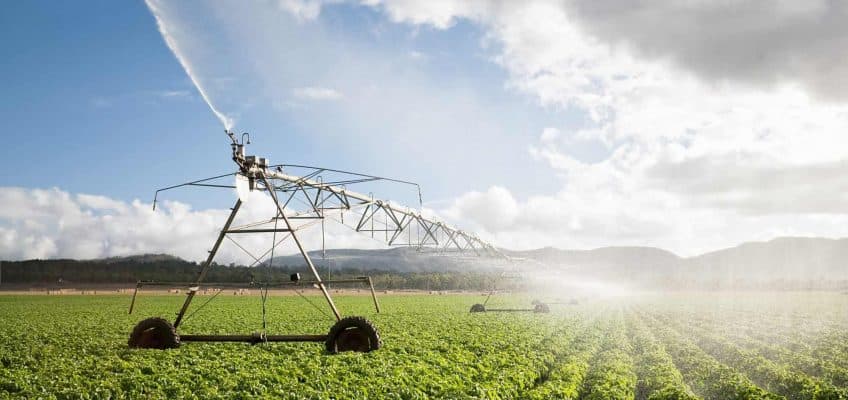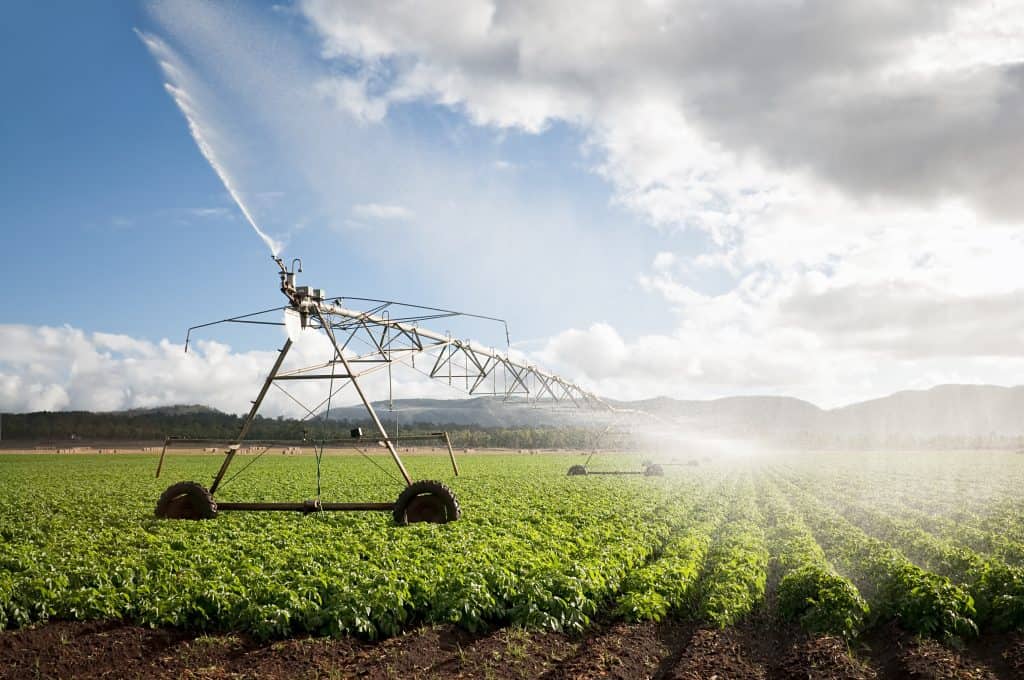As our emissions evolution moves forward, many projects will be feeding the knowledge pipeline. PNZ are leading the movement for sustainable NZ food security.
As our emissions evolution moves forward, many projects will be feeding the knowledge pipeline. PNZ are leading the movement for sustainable NZ food security. IMAGE 003
An integral part of nitrate leaching research is irrigation management.
Maximising the Value of Irrigation (An extract from the PNZ Field Walks Handbook 2020).
By Dirk Wallace of Plant and Food Research.
The 2013–2019 MBIE programme Maximising the Value of Irrigation (MVI) has developed management strategies and new technologies to improve productivity, minimise wasted water, and reduce negative environmental impacts from irrigated land. The programme has shown that by measuring soil water holding capacity and crop water use under an irrigator and understanding the associated degree of variability we can make better irrigation decisions that improve on-farm economic and environmental outcomes.
Improved economic returns
Field trials conducted at Massey University, Palmerston North, show that the use of variable rate irrigation (VRI) can increase profit (less water costs and potentially more yield) when soil variability under the irrigator is significant, with every millimetre of water saved equating to about $2/ha. If 50 mm of irrigation was saved under a 550 meter long pivot then this would be a saving of about $9500.
At sites with large variability in soil water storage (e.g. Fig 1 A), modelling studies suggest that VRI results in less irrigation applied; up to 31% in potatoes. While at sites with low variability (e.g. Fig 1 B), there was little difference.
 Fig 1A
Fig 1A
 Fig 1B Figure 1 Variability in soil type at two MVI study sites
Fig 1B Figure 1 Variability in soil type at two MVI study sites
Determining crop water use allows us to understand how much water the crop needs and when to avoid stress. Field trials at Massey University have shown that yields are reduced when crops are stressed due to an over or under supply of water. To avoid this the programme has made improvements in crop water use estimation using sensing – enabling us to ask both the plant and the soil when and how much water to apply. By understanding more about how much water is available in the soil directly under the irrigator it is much easier to make better decisions about how much to apply.
Managing to a deficit, means the soil isn’t refilled the whole way, enabling rainfall to be captured for plant growth rather than draining away. Capturing 100 mm of rainfall is the equivalent of 1000 m3/ha of irrigation saved or a production saving of $200/ha. Modelling studies across five sites demonstrate that managing irrigation to a soil moisture deficit using VRI, compared with uniform irrigation, can result in no difference in yield.
Better environmental outcomes
Although getting water in to soil sounds simple, it really is anything but. Figure 2 shows a snapshot of what saturated flow through soil looks like. The pattern of this flow is a result of the initial wetness of the soil, how much water is being applied and how fast it is going on. Too wet, too fast and the water cannot be absorbed in to the soil pores. Typically, rain falls at rate of less than 2 mm/h, whereas long centre pivot can apply water at a rate up to (and in excess of) 100 mm/h.

In this example if dissolved nutrients were in the fingered, saturated flow they would have leached deeper in to the profile, bypassing much of potato root zone. In this situation leaching losses can be large. Our field trials show that this leaching can be greatly reduced by managing irrigation to maintain soil water deficits. When considering installing or replacing irrigation systems avoid systems that apply water at high application rates. Installers should aim at matching their system to the soil infiltration capacity – the rate that soil absorbs water when it is saturated. Often this is less than 20 mm/h.
At sites with large variability in soil water storage, modelling studies suggest that VRI results in up to a 43% decrease in drainage in potato crops. While at sites with low variability, there was little benefit to applying VRI. Understanding your soil water storage and managing this to a deficit will reduce your risk of unwanted leaching.
Other research has shown the benefits of increasing the amount of available soil water through modifying soil beds, and or applying soil amendments. Applying mulches led to increased yields by reducing evaporation losses.
To maximise profit and reduce unwanted environmental losses the key steps are:
- Know how much water your soil stores and how variable this is
- Use sensors or water balance methods to work out how much water to apply
- Leave some storage in the soil after irrigation to capture rainfall and avoid leaching.

Work was completed as part of the Maximising the Value of Irrigation programme with principal funding from the Ministry of Business, Innovation and Employment (MBIE) and co-funding from the Foundation for Arable Research, Horticulture New Zealand Vegetable Research and Innovation Board, Environment Canterbury, Hawke’s Bay Regional Council and Irrigation New Zealand. The programme was led by Manaaki Whenua – Landcare Research, Plant & Food Research and the Foundation for Arable Research.




